
The respiratory system is one of the most vital systems in the human body, enabling us to breathe and providing oxygen essential for cellular function. Oxygen fuels our cells, helping produce energy for every process our body performs, from moving muscles to supporting brain function. Composed of organs and structures that work together to facilitate breathing, the respiratory system is responsible for bringing in oxygen and expelling carbon dioxide, a byproduct of metabolism. Understanding this system's structure, function, and ways to maintain its health is essential for supporting overall well-being.
The respiratory system is divided into the upper respiratory tract and the lower respiratory tract, each with specific structures contributing to the breathing process.
The upper respiratory tract includes:
The lower respiratory tract includes:
The lungs are the primary organs of the respiratory system. They occupy most of the chest cavity and are protected by the ribcage. Each lung contains millions of alveoli, creating a large surface area for efficient gas exchange. The right lung is slightly larger than the left and has three lobes, while the left lung has two lobes to make room for the heart.
The respiratory system’s primary function is to facilitate the exchange of gases oxygen and carbon dioxide between the body and the environment. This process occurs in several stages:
The respiratory system plays multiple critical roles beyond providing oxygen:
Various conditions can affect the respiratory system, impairing its ability to function optimally:
Caring for the respiratory system is essential for a high quality of life and overall health. Here are some steps to keep your respiratory system functioning at its best:
The respiratory system is essential for life, responsible for providing oxygen to the body and expelling carbon dioxide. Understanding how it functions and taking steps to protect respiratory health can help prevent various respiratory conditions, supporting a healthier, more vibrant life. Regular check-ups, healthy lifestyle choices, and environmental mindfulness are essential for maintaining optimal respiratory health.

Hair loss can result from multiple factors, including genetics, hormonal imbalances, poor nutrition, stress, and scalp infections. Hair growth...

Graying hair is a natural part of aging, but premature graying can often be managed with a holistic approach that includes lifestyle changes...

Graying of hair is a natural part of the aging process, typically occurring as we age due to a reduction in melanin production, the pigment ...

Alopecia areata is more than just hair loss it’s an autoimmune condition where the body’s immune system mistakenly attacks hair follicles, leading...

The skin is the body’s largest organ and acts as a protective barrier, playing a crucial role in overall health. Skin conditions such as crucial...

Dermatitis is a general term for inflammation of the skin, often characterized by red, itchy, and inflamed patches. It can occur in various forms,...

Lichen planus is a chronic skin condition that can cause significant discomfort and frustration for those who suffer from it. Characterized ...

Warts are small, non-cancerous growths on the skin caused by the human papillomavirus (HPV). They can appear anywhere ...

Vitiligo is a skin condition characterized by the loss of pigmentation, leading to white patches appearing on various parts of the body. It occurs...

Atopic dermatitis, often known as eczema, is a chronic skin condition that affects millions worldwide. Characterized by inflamed, itchy, and dry skin....

Sun allergy, also known as photosensitivity, is a condition where the skin reacts abnormally to sunlight. It often appears as a rash, itching,...

Psoriatic Arthritis (PsA) is a chronic autoimmune condition that affects both the skin and joints. Often linked with psoriasis, PsA can cause swelling...

Pityriasis is a group of skin conditions characterized by scaly patches, discoloration, and itching that often appear on the torso, arms, or legs. While not life-threatening...

Scleroderma is a chronic autoimmune disease that causes the hardening and tightening of the skin and connective tissues. Although it’s relatively ...

The respiratory system is one of the most vital systems in the human body, enabling us to breathe and providing oxygen essential for cellular function. ...

Bronchitis is an inflammation of the bronchial tubes the airways that carry air to your lungs. It typically results from a viral infection, but can ...

Sinusitis is a common condition that affects millions of people every year. It occurs when the sinuses the air-filled cavities in the skull around...
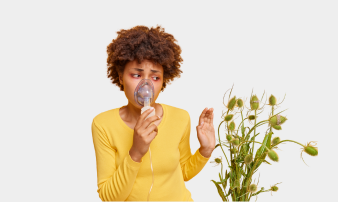
The respiratory system is one of the most vital systems in the human body, responsible for supplying oxygen and removing carbon dioxide. ...
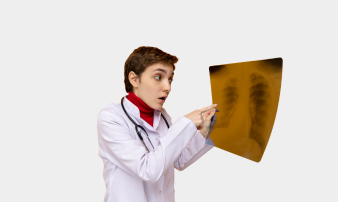
Look after your Lungs is one of the most essential aspects of maintaining a healthy life. The respiratory system allows our body to take in oxygen ...
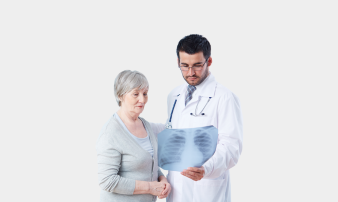
Homoeopathy For Respiratory Diseases offers several potential benefits. It may cause fewer side effects compared to conventional treatments...

The respiratory system plays a vital role in breathing, providing oxygen to the body and removing carbon dioxide. When it is affected, conditions ...
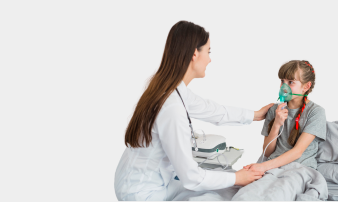
The respiratory system is one of the body’s most vital networks, responsible for delivering oxygen and removing carbon dioxide. When affected ...
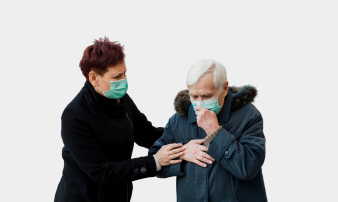
The respiratory system plays a vital role in delivering oxygen to the body and removing carbon dioxide. Any disturbance in its function can affect overall health ...
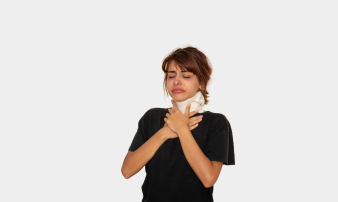
Respiratory Tract Allergies the Homeopathic Perspective and Treatment is an important area to understand for anyone seeking natural ways...

Bronchitis (Homeopathy) is a subject that connects the functioning of the respiratory system with natural approaches to healing. The respiratory system ...

The respiratory system plays a vital role in keeping us alive by allowing oxygen in and removing carbon dioxide. When the respiratory tract ...
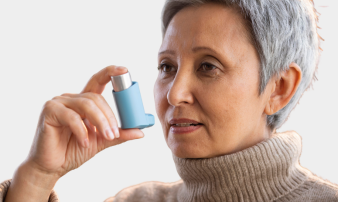
The respiratory system is vital for breathing and ensures oxygen reaches every part of the body. When affected by conditions like asthma, normal breathing ...

Women's health needs are unique and complex, influenced by various factors ranging from hormonal shifts, stress, and lifestyle changes ...

Infertility is a deeply personal and often challenging issue, particularly for women who want to have children but are struggling...

Female pattern baldness, also known as androgenetic alopecia, is a common condition that affects many women, especially as they age. ...

Irregular periods are a common yet often misunderstood issue that affects many women worldwide. Whether it’s a cycle that’s too short...

Leucorrhoea, also known as vaginal discharge, is a common condition that many women experience at some point in their lives. While some level ...

Polycystic Ovary Disease (PCOD), also known as Polycystic Ovary Syndrome (PCOS), is a common hormonal disorder affecting women of reproductive age....

Thalassemia is a genetic blood disorder that affects the production of hemoglobin, the protein in red blood cells that carries oxygen throughout ...
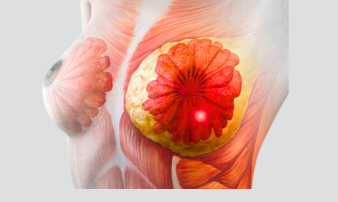
Breast cancer is one of the most common forms of cancer affecting women worldwide. It occurs when abnormal cells in the breast begin to grow uncontrollably, forming a lump or mass....

Blocked fallopian tubes are a common cause of infertility in women. These tiny passages connect the ovaries to the uterus, and when blocked...

Adenoids are a mass of tissue located at the back of the nose, near the throat. They play a role in the immune system, helping the body fight infections...

Childhood obesity is a growing health concern worldwide, with an increasing number of children and adolescents facing challenges related ...

Eosinophilia is a condition where the body produces an abnormally high number of eosinophils, a type of white blood cell. These cells play a role...

Malnutrition and deficiency disorders occur when the body lacks the essential nutrients it needs to function properly. These condition can...

Tonsillitis is an infection or inflammation of the tonsils, two soft tissue masses located at the back of the throat. It is typically caused...

Nephrotic Syndrome is a kidney disorder that causes excessive protein loss in the urine, leading to swelling (edema), fatigue, and increased susceptibility...

A dry coughin children can be more than just an annoyance it’s a persistent irritation that can disrupt sleep, affect daily activities, and even signal ...

Bronchial asthma is a chronic respiratory condition that affects millions worldwide, causing inflammation and narrowing of the airways. ...

Hepatitis B is a viral infection that affects the liver, posing serious health risks, especially if left untreated. Caused by the Hepatitis B virus (HBV), it can lead to chronic liver disease, cirrhos...

Understanding the importance of early intervention and exploring holistic approaches like Hepatitis C homeopathic treatment...

HepatitisC is a viral infection that affects the liver and, if left untreated, can lead to serious complications like liver cirrhosis and liver cancer....

Liver Cirrhosis (Hepatitis-B) and Modern Homeopathy is gaining attention as a promising approach for those ...

Hepatitis C often goes unnoticed in its early stages. When symptoms appear, they might include fatigue, joint pain, poor appetite...

Hepatitis C is a viral infection that primarily affects the liver, often leading to chronic inflammation and long-term liver damage...

viral hepatitis C treated with homoeopathy is an emerging topic among individuals exploring alternative and holistic approaches to liver health....
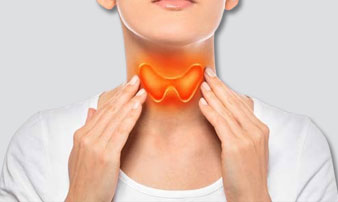
Thyroid disorders impact energy and health. Explore symptoms, diagnosis, and homeopathy’s holistic treatment for balanced thyroid support. ...

Thyroiditis refers to inflammation of the thyroid gland an essential gland that regulates metabolism, energy levels, and overall hormonal balance....

Thyroiditis refers to inflammation of the thyroid gland an essential gland that regulates metabolism, energy levels, and overall hormonal balance....

Homeopathy Medicine for Thyroid is gaining attention as a gentle, natural way to support thyroid health. Thyroid disorders can significantly impact ...

Thyroid health is crucial for maintaining the body's energy, metabolism, and overall balance. Homeopathic Medicine For Thyroid Disorders ...

Thyroid health is crucial for maintaining the body's energy, metabolism, and overall balance. Homeopathic Medicine For Thyroid Disorders ...

Top Homeopathic Remedies For Hypothyroidism And Hyperthyroidism are gaining attention among people who are searching ...

The Best HomeopathyTreatment for Thyroid Disorders focuses on addressing the root cause of thyroid imbalances through natural methods. ...

The Management of overt hypothyroidism with homoeopathic medicine focuses on addressing an underactive thyroid gland, a condition ...

Thyroid Issues are becoming increasingly common in today’s fast-paced world. The thyroid gland plays a vital role in regulating metabolism...

Thyroid disorders are increasingly common, affecting many people worldwide. Finding the right treatment can be challenging, especially ...

Homeopathy for Hypothyroidism Treatment is becoming an increasingly popular search term for those seeking natural and holistic alternatives ...

Can Homeopathy Cure Thyroid Conditions a question many individuals seeking natural healing paths often ask. The thyroid, a small gland...

Thyroid disorders are increasingly common in today's fast-paced lifestyle, and one of the most misunderstood conditions is hyperthyroidism....
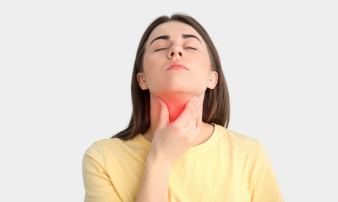
Thyroid health plays a vital role in maintaining overall well-being, particularly for women. The thyroid is a small gland in the neck responsible for producing hormones...
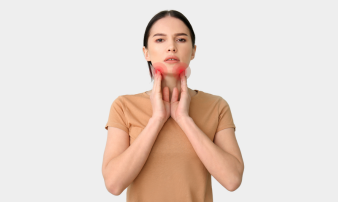
Thyroid disorders are increasingly common, affecting millions of people worldwide. The thyroid is a small gland in the neck that regulates metabolism...
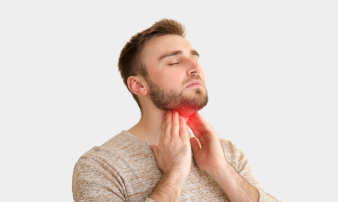
Thyroid disorders are increasingly common in today’s fast-paced world. If left untreated, they can affect metabolism, energy levels, and overall health...
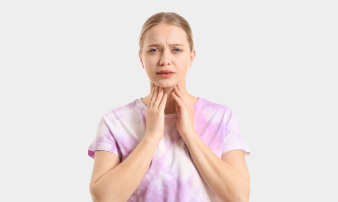
Thyroid health plays a crucial role in regulating metabolism, energy levels, and overall wellbeing. Many people wonder, can thyroid cause weight gain...
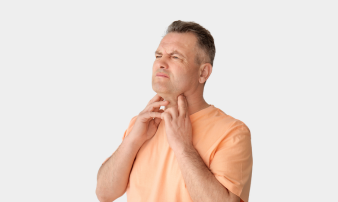
Thyroid disorders are becoming increasingly common, affecting millions worldwide. But Can thyroid cause weight loss? The thyroid is a small gland...
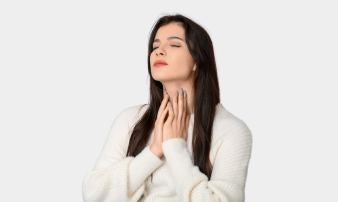
Thyroid disorders are becoming increasingly common among women, affecting their energy levels, metabolism, and overall health...

Does hypothyroidism cause weight loss is a common concern for many people experiencing changes in their metabolism and energy levels...
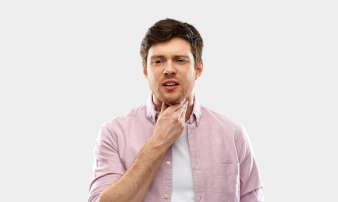
Does hypothyroidism cause weight loss is a common concern for many people experiencing changes in their metabolism and energy levels...
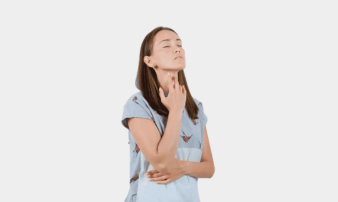
Hyperthyroidism is a condition where the thyroid gland becomes overactive and produces excessive amounts of thyroid hormones the thyroid is a small gland...

The thyroid is a small, butterfly-shaped gland located at the base of your neck. It plays a crucial role in regulating metabolism, energy levels, and overall hormonal balance...

Thyroid health plays a crucial role in maintaining overall well-being. The thyroid, a small gland located in the neck, regulates metabolism...
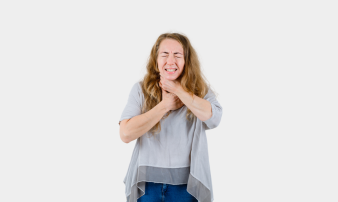
Hypothyroidism with weight loss is a condition where the thyroid gland, which regulates metabolism and energy, does not produce enough hormones...

Pregnancy and thyroid symptoms often occur because the thyroid gland plays a key role in regulating metabolism, growth, and energy levels...

Problems with thyroid in women are increasingly being recognized as a common health concern today. The thyroid, a small butterfly-shaped gland...

The thyroid is a small gland in the neck, yet it plays a huge role in controlling energy, metabolism, and overall balance in the body. When it does not function properly...
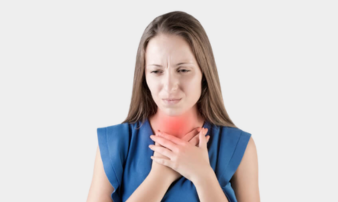
The thyroid gland, a small butterfly-shaped organ in the neck, plays a crucial role in regulating metabolism, energy levels, and overall hormonal balance...
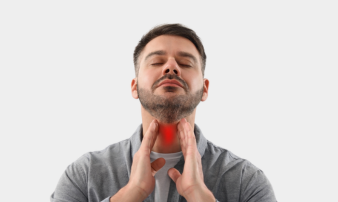
Thyroid issues are not only limited to women; men too can face challenges when the thyroid gland is not functioning properly understanding symptoms of thyroid problems ...

The thyroid is a small butterfly-shaped gland in the neck, but it plays a powerful role in maintaining health. When it is not functioning properly...
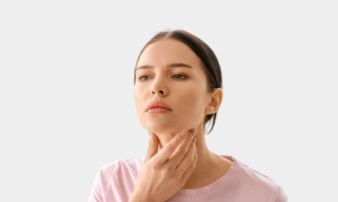
Thyroid and weight gain symptoms can affect many people, yet they are often overlooked. Understanding these symptoms is crucial because the thyroid plays a central role...
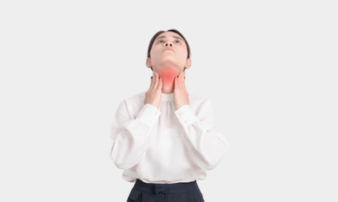
The thyroid gland is a small butterfly-shaped organ located in the neck, but its role in maintaining health is very significant. It regulates metabolism...
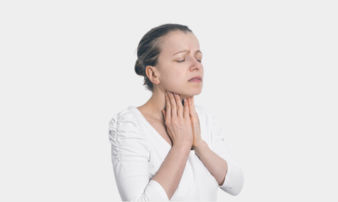
Thyroid issues are becoming increasingly common in today’s fast-paced world. If you are looking for effective treatment options, consulting a thyroid doctor...
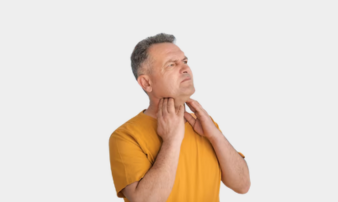
Thyroid disorders affect millions of people worldwide, influencing metabolism, energy levels, and overall health. Finding the right care is essential...

Thyroid disorders are becoming increasingly common, affecting people of all ages. The thyroid gland, located in the neck, plays a crucial role in regulating metabolism...

Thyroid disorders are increasingly common, affecting people of all ages. If left untreated, they can lead to serious health complications. Finding a reliable thyroid...

Thyroid health is essential for maintaining overall well-being, as the thyroid gland regulates metabolism, energy levels, and hormonal balance...
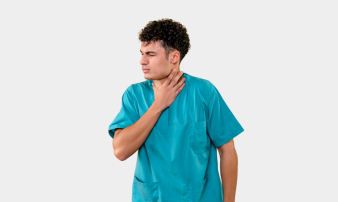
Thyroid disorders are increasingly common in today’s fast-paced world, and one condition that often goes unnoticed is Thyroid that causes weight gain...

Thyroid disorders can impact many aspects of health, and one such concern is Thyroid that causes weight loss. The thyroid is a small gland...
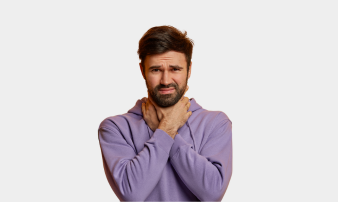
Thyroid health plays a crucial role in maintaining overall well-being, and disorders like hypothyroidism can significantly impact daily life weight loss and hypothyroidism is a common concern...
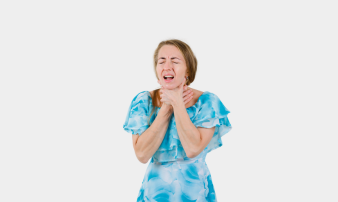
Thyroid disorders affect millions worldwide and can significantly impact metabolism and overall health. One of the less-discussed consequences...

weight loss diet thyroid is a common concern for individuals struggling with thyroid imbalances. The thyroid is a small gland located in the neck...
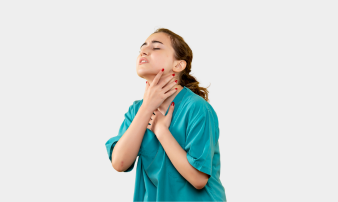
Will thyroid cause weight gain is a question many people ask when they notice sudden changes in their body weight. The thyroid is a small gland...

Will thyroid cause weight loss is a question many people ask when they notice unexplained changes in their body. The thyroid is a small gland in the neck...
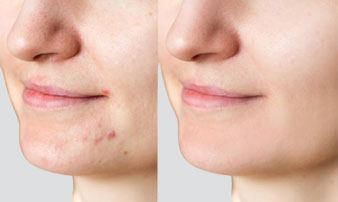
Acne is a common skin condition that affects millions of people, particularly adolescents and young adults. It occurs when hair follicles become ...

Kidney stones are a painful and often recurring condition that affects millions of people worldwide. These small, hard deposits that form ...

Nephrolithiasis, commonly known as kidney stones, is a condition where hard mineral deposits form inside the kidneys....

Renal failure, also known as kidney failure, occurs when the kidneys lose their ability to filter waste and excess fluids from the blood effectively....

Homeopathic concepts and diagnosis in the management of chronic renal failure focus on supporting kidney health naturally. The kidneys filter waste...
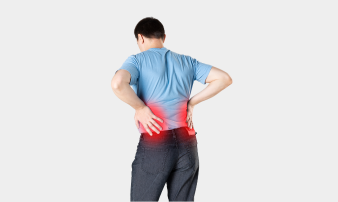
Homeopathy in the management of chronic kidney disease is gaining attention among people looking for natural and holistic approaches to kidney health...
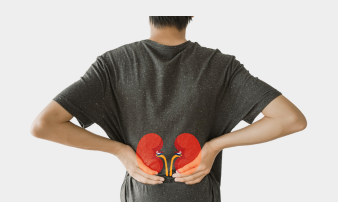
Kidney and Bladder Health Homeopathy Doctor is a growing concern as more people seek natural and holistic ways to maintain their well-being...

Kidney Diseases in Childhood are a significant health concern that can affect a child’s overall growth and well-being. The kidneys play a crucial role...
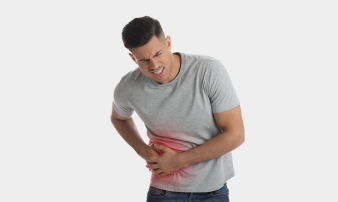
Kidney Failure and Modern Homeopathy Treatment is gaining attention as more people look for natural ways to support kidney health. The kidneys play a vital role...
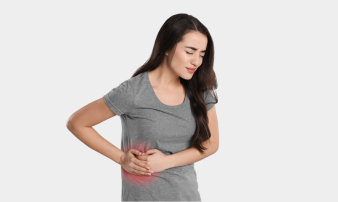
Kidney Stones Symptoms, Causes, Prevention is a condition that affects the urinary system, where hard mineral and salt deposits form inside the kidneys...

Non surgical homeopathic treatment of kidney stones focuses on addressing kidney stone issues naturally, without surgical intervention...
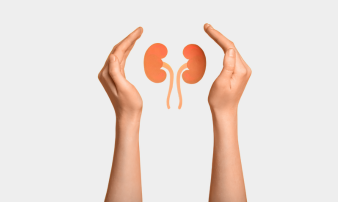
Renal failure, also known as kidney failure, occurs when the kidneys lose their ability to filter waste and excess fluids from the blood effectively...
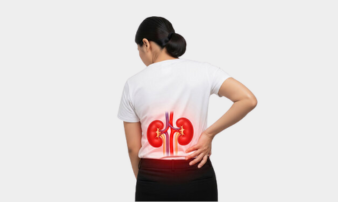
The Role of Alternative Medical Systems in Adult Chronic Kidney Disease Patients is gaining attention as more people explore natural and holistic approaches...

Role of Homeopathy in Management of Renal Stones is becoming a topic of interest for those seeking natural and holistic approaches to kidney health...

Brain tumours are abnormal growths of tissue in the brain that can disrupt normal brain function. They may be benign (non-cancerous) ...

Tumors are abnormal growths of tissue that can occur anywhere in the body. Some tumors are benign (non-cancerous), while others are malignant ...

Leucorrhoea, also known as vaginal discharge, is a common condition that many women experience at some point in their lives. While some...

Tonsillitis is an infection or inflammation of the tonsils, two soft tissue masses located at the back of the throat. It is typically caused by a viral ...

Acidity, or acid reflux, is a common digestive issue that many people experience from time to time. It occurs when stomach acid flows ...

Gastritis is an inflammation of the stomach lining, often caused by factors such as stress, poor diet, bacterial infections, or excessive alcohol ...

Gastroesophageal reflux disease (GERD) is a chronic digestive condition where stomach acid frequently flows back into the esophagus...

A peptic ulcer is a sore that develops on the lining of the stomach, small intestine, or esophagus. Caused by an imbalance between digestive...

Ulcers are open sores that can form on the lining of your stomach (gastric ulcers), small intestine (duodenal ulcers), or even the esophagus....

Bone health is a crucial aspect of overall well being, as bones provide structure to the body, protect vital organs, and enable movement. ...

Cervical spondylosis, often referred to as neck arthritis, is a common condition that affects the bones, discs, and joints in the cervical ...

Rheumatoid Arthritis (RA) is a chronic autoimmune condition that primarily affects the joints, causing pain, swelling, stiffness, and eventual ...

Frozen shoulder, medically known as adhesive capsulitis, is a condition that causes stiffness, pain, and limited range of motion in the shoulder joint. ...

Fibromyalgia is a chronic condition that affects millions worldwide, yet it often goes undiagnosed or misunderstood. Characterized by widespread muscle...

Rheumatological diseases, often linked to autoimmune disorders, involve inflammation and pain in the joints, muscles, and connective tissues. ...

Cholecystitis, an inflammation of the gallbladder, often occurs when gallstones block the bile ducts, leading to painful symptoms and ...

Headaches are one of the most common health complaints, affecting millions of people worldwide. While they can range from mild discomfort ...

Snoring is a common issue that affects many people, yet it often goes unaddressed until it disrupts sleep or becomes a source of embarrassment....

Nosebleeds, or epistaxis, are more common than many realize. While often harmless and short-lived, frequent or severe nosebleeds can disrupt daily life....

Crohn’s disease is a chronic inflammatory condition of the gastrointestinal (GI) tract, often affecting the small intestine and colon....

Lupus is a chronic autoimmune disease where the body’s immune system mistakenly attacks its own tissues, leading to inflammation, pain, and damage to various organs. ...

Bell’s palsy is a sudden, temporary weakness or paralysis of the facial muscles, usually affecting one side of the face. ...

Anal fissure may be a small tear in the lining of the anal canal, but it can bring about significant discomfort and disruption to daily life. Often caused...

Anxiety Neurosis commonly referred to as generalized anxiety disorder is more than just feeling stressed or worried occasionally. It's a chronic condition ...

Diabetes Mellitus is a chronic condition that affects how your body uses blood sugar (glucose), an essential source of energy. When the body...

Meniere’s disease is a chronic disorder of the inner ear that can significantly impact daily life. Characterized by episodes of vertigo, hearing loss....

Otitis Media is a common yet often overlooked condition, particularly in children, that affects the middle ear. It occurs when the space ...

Rheumatic fever is a serious inflammatory disease that can develop after an untreated or poorly treated strep throat infection. It affects the heart, joints, skin, and nervous system....

Systemic Lupus Erythematosus (SLE) is an autoimmune disease where the body’s immune system mistakenly attacks its own tissues and organs....

Dental caries, commonly known as tooth decay or cavities, is a widespread oral health condition that occurs when the enamel of a tooth ...

Depression is more than just feeling sad or having a bad day—it's a serious mental health condition that affects millions of people worldwide. ...

Obsessive-Compulsive Disorder (OCD) is a mental health condition characterized by persistent, intrusive thoughts (obsessions) and repetitive ...

Infertility is a deeply personal and often challenging issue, particularly for women who want to have children but are struggling ...

Male infertility is a condition that affects many men worldwide, but it’s often overlooked or stigmatized. Infertility is defined as the inability ...

Male pattern baldness, also known as androgenetic alopecia, is a common condition that affects millions of men worldwide. It is characterized ...

Varicocele is a condition that affects the veins within the scrotum, causing them to become enlarged and swollen, similar to varicose veins ...

Prostate enlargement, medically known as Benign Prostatic Hyperplasia (BPH), is a common condition that affects aging men. As the prostate gland ...

Prostate enlargement, medically known as Benign Prostatic Hyperplasia (BPH), is a common condition that affects aging men. As the prostate gland ...

Azoospermia is a condition in which a man’s semen contains no sperm. This can affect fertility and is a significant concern for couples hoping to conceive....

Piles, also known as hemorrhoids, are swollen blood vessels in the rectum or anus that can cause discomfort, pain, and even bleeding. ...

Filariasis is a parasitic infection caused by microscopic worms that are transmitted through mosquito bites. This disease primarily affects ...

Hemorrhoids, also known as piles, are swollen blood vessels in or around the rectum and anus. Though common, they can be uncomfortable ...

Infertility is a growing concern that affects millions of couples worldwide. It’s a complex condition that can be emotionally and physically ...

Uterine fibroids are non-cancerous growths that develop in or around the uterus, commonly affecting women during their reproductive years....

Urinary incontinence is a condition that affects millions of people worldwide, and yet it often remains a topic of quiet embarrassment. ...

Urinary Tract Infections (UTIs) are among the most common bacterial infections, affecting millions of people each year. A UTI occurs...

Urinary Tract Infections (UTI) are one of the most common health concerns, especially in women. They occur when harmful bacteria grow within the urinary tract...

Urinary Tract Infections, commonly known as UTIs, occur when bacteria enter the urinary system, affecting the bladder, kidneys, or urethra....

Urinary Tract Infection (Homeopathy) is a common health problem caused by bacteria entering the urinary tract. It can affect the bladder, urethra...

Role of homoeopathic medicines in acute cases of urinary tract infection in females is gaining attention among women who prefer natural and gentle healing. ...

Homoeopathic Remedies for Urinary Tract Infection provide a natural approach to managing one of the most common health concerns. ...

Role of Homeopathy In UTI / Urosepsis is an important subject when we look at safe, natural ways of managing urinary tract health. Urinary Tract Infections (UTI) ...

Urinary Tract Infections (UTI) are a common health concern that affects people of all ages. They occur when bacteria enter the urinary tract...

Homoeopathic Management of Chronic Urinary Tract Infection begins with understanding what a UTI is. A urinary tract infection happens ...

Urinary Tract Infections (UTI) are common health issues that occur when bacteria affect the urinary system, including the bladder and urethra. ...

Urinary Tract Infections (UTI) are common health problems that affect the bladder and urinary system. They usually occur when bacteria enter the urinary tract...

Homeopathy treatment for Autoimmune diseases is gaining attention as more people turn toward natural and holistic alternatives ...

Autoimmune diseases are complex conditions where the immune system mistakenly attacks the body’s own healthy tissues. One such condition ...

Autoimmune disorders affect millions of people worldwide and can be difficult to manage with conventional treatments alone. An increasing number ...

Autoimmune diseases are becoming increasingly common, affecting millions of people worldwide. These conditions occur when the immune system...

Autoimmune diseases occur when the immune system mistakenly attacks the body’s own healthy tissues. This can lead to chronic inflammation ...

Autoimmune diseases occur when the body’s immune system, which is meant to protect against harmful invaders, mistakenly attacks healthy cells...

Autoimmune diseases are conditions in which the body’s immune system mistakenly attacks its own tissues. These chronic illnesses, including Lichen planus...

WHO Says Homeopathic Treatments Cannot Cure HIV, TB, Malaria, Influenza, Infant Diarrhea this statement from the World Health Organization ...

Homoeopathic medicines in the management of HIV infection offer a unique perspective in addressing a complex and life-altering condition....

Traditional Indian medicine and homeopathy for HIV/AIDS offer a complementary approach to managing one of the world’s most serious health conditions HIV. ...

Homeopathic remedies for HIV patients are gaining attention as more individuals seek natural and holistic approaches to support their well-being....

The Effectiveness of homeopathic medicines in HIV patients is a subject that continues to generate curiosity among those seeking natural and holistic...

Common symptoms of HIV may include fatigue, frequent infections, swollen lymph nodes, unexplained weight loss, skin rashes, night sweats, and prolonged fever....

HIV/ AIDS Can Homeopathy Medicines Help in Treating it is a question many people are asking today as they look for natural and holistic health alternatives....

Homeopathy and HIV is a topics gaining interest among those exploring natural health alternatives. As more individuals look beyond conventional treatments,...

HIV Treatment Masters Homeopathy In today’s evolving world of healthcare, exploring gentle, effective, and holistic solutions is becoming increasingly...

HIV, Herpes Zoster, Homeopathy and Hope these four words together tell a story of struggle, resilience, and the pursuit of healing through both conventional...

Chronic allergies like allergic dermatitis affect millions worldwide, yet many people continue to search for gentle, long-term solutions beyond...

Allergy Treatment in Homeopathy, Can it be treated? have become increasingly common in today's fast-paced world, with many people seeking long-term relief ...

Treatment for Different Allergies in Homeopathy, Hyderabad substances that are typically harmless. Whether it's dust, pollen, certain foods, or environmental triggers,...

Homeopathy for seasonal allergic rhinitis Chronicallergies occur when the immune system overreacts to substances such as pollen, dust mites, or mold spores....

Homeopathic Treatment, Remedies, and Medicine for Allergy...

Homeopathic Treatment For Allergic Rhinitis...

Homeopathic Relief From Allergies: Types and Benefits Chronic allergies affect millions worldwide, disrupting daily life with persistent symptoms that often return year after year....

Best homeopathic medicine for allergic rhinitis Chronic allergies occur when the immune system overreacts to typically harmless substances such as pollen,...

Hay Fever Homeopathy Chronic allergies are more than just an occasional sneeze or runny nose. For many, they are persistent, ...

A Series of Homeopathic Remedies Focus: Liver Cirrhosis Treatment Liver cirrhosis treatment is a topic that concerns millions worldwide, especially those exploring safer, natural health alternative...

Liver Cirrhosis and Modern Homeopathy Treatment Liver Cirrhosis and Modern Homeopathy Treatment is gaining interest among those looking for gentle...

Comprehensive Approach to Liver Cirrhosis Treatment Liver cirrhosis is a serious yet often misunderstood condition that affects millions globally....

Liver cirrhosis is a progressive condition where healthy liver tissue is replaced by scar tissue,...

A Liver Manifestation; Hepatic Cirrhosis Cirrhosis of the liver is a chronic and progressive condition that slowly damages this vital organ, ...

Best Treatment for Liver Cirrhosis...

Homoeopathic Treatment For Fatty Liver Grade 1 Disease is gaining attention among individuals who are exploring natural and holistic alternatives to conventional ...

Liver diseases diagnosed as Liver cirrhosis Liver diseases diagnosed as Liver cirrhosis are becoming increasingly common in today’s fast-paced world. ...

Liver Cirrhosis and Modern Homeopathy's Treatment is becoming an increasingly discussed topic among those seeking natural and holistic approaches to chronic...

What treatments are available for chronic hepatitis B? Chronic hepatitis B is a long-term infection caused by the hepatitis B virus (HBV), which primarily affects the liver. Left unmanaged, ...

Liver Injury The Therapeutic Dilemma of Homeopathy is a subject that brings attention to a silent but serious health condition Cirrhosis of the Liver. As people increasingly seek natural alternatives ...

Successful Treatment of Chronic Viral Hepatitis has become a topic of growing interest for people seeking natural health alternatives. As awareness increases about the side effects...

Liver injury the therapeutic dilemma of homeopathy In today'sfast-paced world, where unhealthy diets, alcohol, and viral infections threaten liver health, Liver injury the therapeutic...

Hepatitis A is a viral liver infection caused by the Hepatitis A virus (HAV), commonly spread through contaminated food or water. ...

The symptoms of diabetes can develop gradually, making it harder to detect in the early stages. Common signs include increased thirst, ...

Recognizing the symptoms early is essential in managing viral hepatitis C treated with homoeopathy. However, many people with hepatitis C ...

Diabetes is a long-term health condition that affects how your body turns food into energy. It either arises when the pancreas does not produce enough insulin or when the ...

Diabetes is a chronic condition where the body either doesn’t produce enough insulin or cannot use it effectively. In Type II Diabetes, ...

Type 2 diabetes mellitus is a chronic condition that affects how your body processes blood sugar (glucose). It typically develops in adults and is...

When it comes to symptoms, Diabetes mellitus & Homoeopathy highlights a range of warning signs that shouldn't be ignored. These include ...

Diabetes is a chronic metabolic disorder that affects the way the body processes blood sugar (glucose). If left unmanaged, it can ...

Diabetes is a chronic condition where the body either doesn’t produce enough insulin or cannot effectively use the insulin it does produce. ...

Diabetes occurs when the body either doesn’t produce enough insulin or can’t effectively use the insulin it does produce. This leads to elevated...

Diabetes management focuses on maintaining healthy blood sugar levels through a combination of diet, exercise, medication, and lifestyle changes....

Viral infections are widespread and can affect anyone, anywhere. One of the most common and recurring viral infections is Influenza (Homeopathy)....

Common Cold (Homeopathy) is a natural and gentle approach that many people explore when seeking relief from viral infections,...

Viral infections are a common cause of illnesses around the world, and one of the most frequent among them is the common cold. Caused by a variety ...

Viral infections such as influenza and acute respiratory tract infections are caused by viruses that spread rapidly through sneezing, coughing,...

Typical symptoms of viral infections include sore throat, nasal congestion, coughing, sneezing, fever, fatigue, and sometimes difficulty in ...

Viral infections are among the most common health concerns, especially during seasonal changes. These infections are caused by viruses that...

Viral infections are caused by microscopic organisms that invade and multiply within the body’s cells. These infections can affect various systems, including...

Symptoms of viral infections often include fever, fatigue, cough, sore throat, muscle aches, and sometimes digestive issues like nausea or diarrhea....

The symptoms of viral infections vary depending on the virus type but often include fever, cough, fatigue, sore throat, body aches, and...

viral infections are caused by viruses that invade and multiply within the body’s cells, leading to illnesses that range from the common cold to more serious...

Sinusitis occurs when the sinus cavities become blocked and filled with fluid, leading to infection or discomfort. This condition is typically cause,...

Sinusitis occurs when the tissues lining the sinuses become inflamed, often leading to blocked passages and mucus build-up. This can be caused by...

Sinusitis typically presents with nasal congestion, facial pain or pressure, thick nasal discharge, headache, and sometimes fever....

Sinusitis is the inflammation of the sinuses, which are air-filled spaces in the skull. When these spaces become blocked with fluid due to ...

sinusitis can range from acute (short-term) to chronic (long-term) and can significantly impact quality of life if left untreated. Headaches, facial pressure, ...

The most common symptoms of sinusitis include facial pain or pressure, blocked or runny nose, headaches, loss of smell, and coughing. In some cases...

Effective Homeopathy Remedies for Sinus Headaches Sinusitis is the inflammation or swelling of the tissue lining the sinuses. It is usually triggered by infections (viral, bacterial, or fungal)....

Homeopathy Treatment for Sinusitis Common symptoms of sinusitis include facial pain, nasal congestion, headache, thick nasal discharge, and a reduced sense of smell. ...

Sinus Problems The symptoms of sinus problems often resemble those of a persistent cold. These may include nasal congestion, thick nasal discharge, facial pain ...

What is Sinusitis, Its Types & Homeopathy Treatment. To better understand what is sinusitis, its types & homeopathy treatment, one must first recognize the different forms of sinusitis: acute, subacut...

When it comes to finding effective, holistic, and side-effect-free treatment in Hyderabad, the search often leads to one name Masters Homeopathy...

Best Homeopathy Hospital in Vishakapatnam 2025 Guide When searching for the best homeopathy hospital in Vishakapatnam, Masters Homeopathy...

Best Homeopathy Hospital in Hyderabad – 2025 Guide In 2025, the demand for holistic and side-effect-free medical care continues to grow. Among the ...

When it comes to holistic, side-effect-free healing, homeopathy is becoming the preferred choice for many patients dealing with chronic and lifestyle diseases. ...

Best Homeopathy Hospital in Kukatpally 2025 Guide When it comes to holistic and safe healthcare, homeopathy has gained immense popularity ...

When it comes to finding the best homeopathy hospital in Tirupati, Masters Homeopathy stands out as a beacon of trust, excellence, and patient-centered care....

When it comes to finding the best homeopathy hospital in Karimnagar, one name that consistently stands out is Masters Homeopathy. Known for its exceptional treatment outcomes, experienced doctors...

When it comes to finding effective and trusted homeopathic care, Masters Homeopathy stands out as the best homeopathy hospital in Hanumakonda....

When searching for the best homeopathy hospital in Rajahmundry, one name consistently stands out Masters Homeopathy. Known for its personalized care, highly effective treatments...

If you're looking for the best homeopathy hospital in Guntur, Masters Homeopathy stands as a beacon of hope and healing. With over 12+ branches ...

Masters Homeopathy is one of India's leading homeopathy chains, with over 12+ branches spread across South India. Known for its science-backed approach ...

When it comes to holistic healing and proven results, Masters Homeopathy stands tall as the best homeopathyhospital in Adilabad. With over 12 branches ...

Top 10 Homeopathic Medicines For Cough | Best Remedies The most common symptoms include dry or wet cough, throat pain, hoarseness, tickling ...
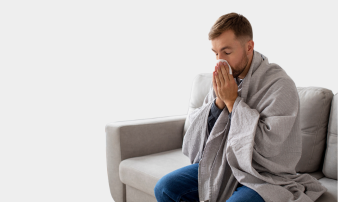
Cough and sore throat are among the most common ailments that affect people of all ages. They often start as a minor discomfort but can quickly escalate ...

Homeopathic Cough, Cold, and Flu is a growing area of interest for those seeking natural alternatives to conventional treatments. Cough and sore throat are common discomforts ...
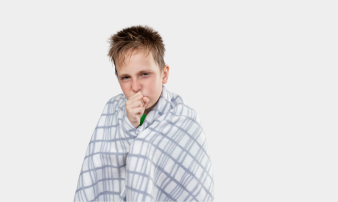
Homeopathic Medicine for Sore Throatis gaining attention as a natural solution for people looking to relieve discomfort without relying heavily on conventional medicines....

Homeopathic Remedies for Sore Throat and Tonsillitis work gently by aligning the body’s healing system with its natural rhythms. Sore throat and cough are symptoms...
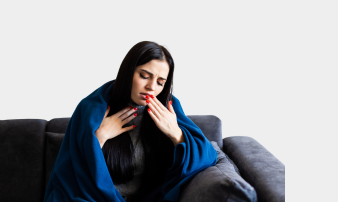
Homeopathic Remedies for a Sore Throat are becoming increasingly popular among individuals seeking natural alternatives ...

Common Cold (Homeopathy) is gaining attention as more people turn toward natural and holistic remedies to support their health. A cough and sore throat...

Homeopathic Medicine For Cough is gaining attention among those seeking gentle and natural remedies. Cough and sore throat are common health ...
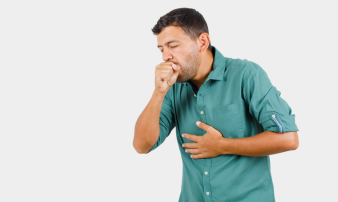
Homeopathic Medicines For Cough is gaining attention among those seeking gentle and natural remedies. Cough and sore throat are common...
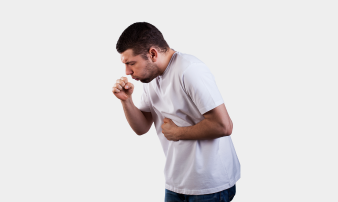
Cough (Homeopathy) is a condition many of us experience, often accompanied by a sore throat that adds discomfort to our daily lives....

Homeopathy for Cough is a natural approach many people are turning to when faced with the discomfort of coughing and sore throat. These conditions...
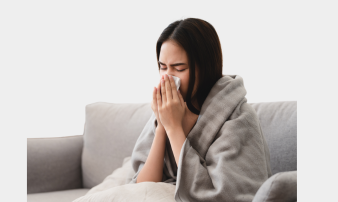
Homeopathic Approaches for Cold and Flu Season have become an increasingly popular choice among individuals looking for natural and holistic...
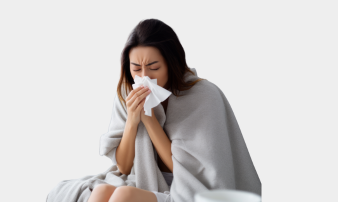
The flu, also known as influenza, is a contagious viral infection that primarily affects the respiratory system. It is more than just a common cold...
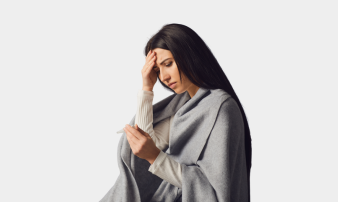
Flu, or influenza, is a contagious respiratory illness caused by viruses that affect the nose, throat, and lungs. It can range from mild to severe...
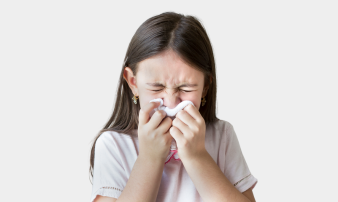
Homeopathic medicines for prevention of influenza and acute respiratory tract infections in children are becoming a topic of interest...
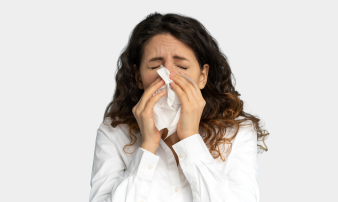
Homeopathic remedies for influenza have gained attention as a natural health alternative for people looking beyond conventional medicine...
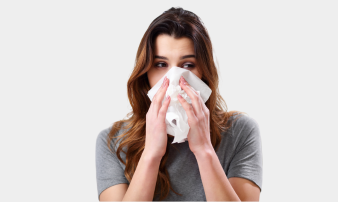
Homeopathic treatment of patients with influenza-like illness has gained attention among those seeking natural and gentle approaches to health care...
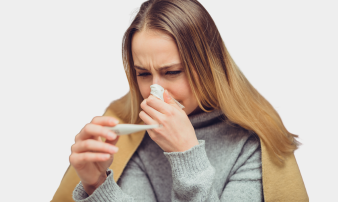
Influenza (Homeopathy) is an increasingly explored topic among those seeking natural approaches to health. Influenza, commonly known as the flu...

The flu, or influenza, is a common viral infection that affects millions every year. Seasonal flu usually spreads through droplets when people cough or sneeze...
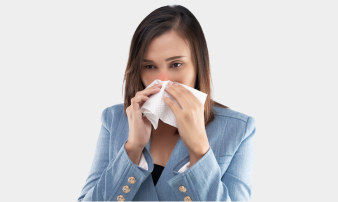
The flu, also known as influenza, is a contagious respiratory illness caused by viruses that affect the nose, throat, and lungs. It spreads quickly...
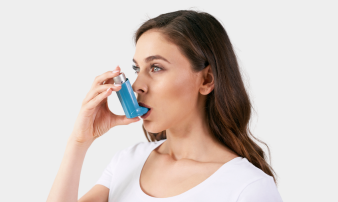
Asthma is a chronic respiratory condition that affects millions of people worldwide. It is caused by the narrowing and inflammation of the airways...

Asthma (Homeopathy) Treatment is a growing area of interest for people who wish to explore natural and holistic ways to manage respiratory conditions...

Asthma is a chronic condition that affects the airways, making it difficult for a person to breathe properly. It can cause coughing wheezing, and shortness of breath...
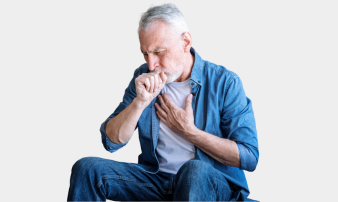
Asthma is a chronic respiratory condition that affects the airways, making it difficult for a person to breathe. The condition often worsens...

Asthma is a chronic condition that affects the airways, making breathing difficult due to inflammation and narrowing of the bronchial tubes...

Asthma is a chronic respiratory condition that affects the airways, making it difficult for a person to breathe. It is caused by inflammation...
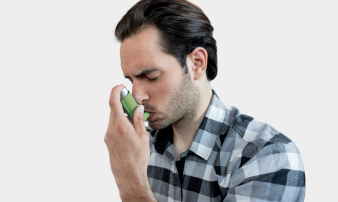
Asthma is a long-term respiratory condition that affects the airways, making it difficult to breathe freely. In this condition, the airways become inflamed...

Asthma is a chronic condition that affects the airways in the lungs, making it difficult to breathe. It often results in coughing, wheezing, chest tightness...
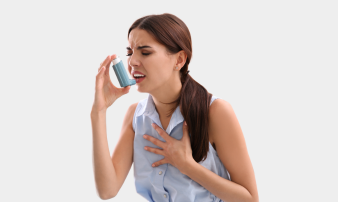
Asthma is a condition that affects the airways, making it difficult for people to breathe freely. It occurs when the airways become inflamed...

Asthma is a chronic respiratory condition that affects the airways, making it difficult for a person to breathe freely. It can cause recurring episodes...
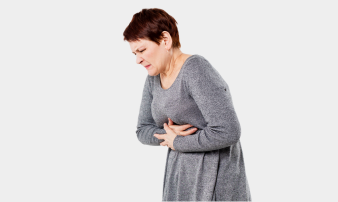
A Holistic Approach of Homoeopathy in Cases of Polycystic Ovarian Syndrome is gaining attention as more women seek natural and gentle methods...

Discover the Top Homeopathic remedies PCOD offer a natural approach to managing PCOD and PCOS, conditions that affect millions of women...

Homeopathic PCOS & PCOD Treatment is gaining attention as more women look for natural and holistic approaches to manage Polycystic ovarian syndrome...

Homeopathic Treatment in Patients with Polycystic Ovarian Syndrome is gaining attention among women seeking natural approaches to manage...

Homeopathy Treatment for PCOD/PCOS has emerged as a gentle and holistic approach for managing a common hormonal disorder affecting women...

Homeopathic Management of Polycystic Ovary Syndrome is an approach that focuses on restoring balance to the body while addressing the underlying causes...

Homeopathy in PCOS has emerged as a popular natural approach for women seeking alternatives to conventional treatments. Polycystic ovary syndrome...
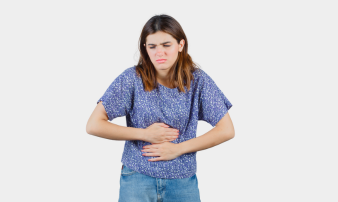
Polycystic Ovarian Syndrome Treated by Homeopathy is an approach that focuses on managing one of the most common hormonal disorders...
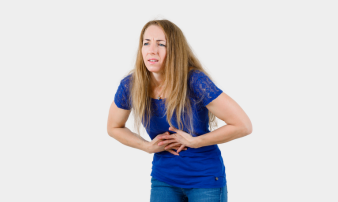
Polycystic Ovarian Syndrome Treated with Individualized Homeopathy is a growing concern for women of reproductive age. Polycystic Ovarian syndrome...

Polycystic Ovary Syndrome (PCOS / PCOD) is a hormonal disorder that affects women of reproductive age. It occurs when there is an imbalance...

Migraines are more than just severe headaches; they are a neurological condition that can affect daily life, productivity, and overall health...
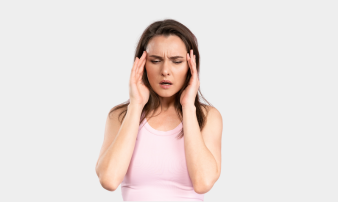
Headache & Migraine Relief by Homeopathy is a topic that interests many people who seek natural solutions for managing recurring head pain...

Homeopathic prophylaxis of headaches and migraine is a subject of growing interest among people who prefer natural health alternative...

Migraines are more than just headaches. They are a neurological condition that can interfere with daily life, productivity, and overall well-being...

Homeopathic treatment of migraine in children is an important topic for parents who are exploring safe and natural alternatives for their child’s health...
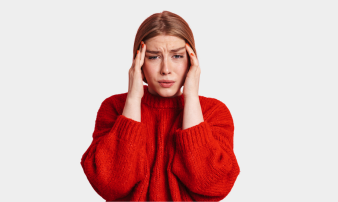
Homeopathy for Migraine Does It Work is a question many people ask when looking for natural and safe alternatives for pain relief. Migraine is not just a simple headache...
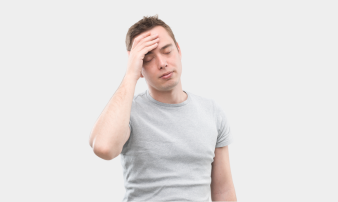
Homeopathy Treatment For Migraine is becoming a subject of interest for many individuals who prefer natural health alternatives. Migraines are more than just headaches...

Migraine headache treated using homeopathy is a common concern for many individuals today. Migraines are more than just severe headaches...

Migraine Headaches (Homeopathy) are a neurological condition that can cause intense and recurring headaches, often accompanied by sensitivity to light...

Migraine Types, Causes, Symptoms & Homeopathy Treatment is a subject that has gained much attention in recent years due to the rising...

Varicose veins are swollen, twisted veins that often appear on the legs and can cause discomfort or pain. Addressing varicose veins is important...
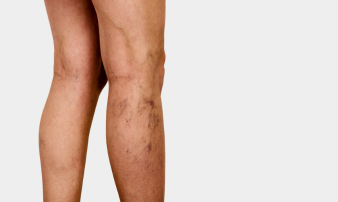
Varicose Veins (Homeopathy) is a condition where veins, often in the legs, become enlarged, twisted, and sometimes painful due to weakened valves ...
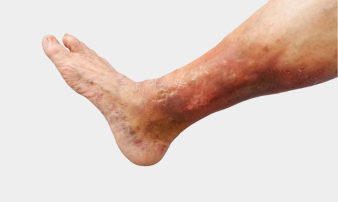
Varicose veins are swollen, twisted veins that usually appear on the legs and feet due to weakened valves and veins. They are not just a cosmetic concern...

Low back pain is a common condition affecting millions of people worldwide. It can range from mild discomfort to severe pain that limits daily activities. ...
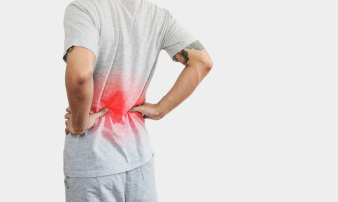
Lower Back Pain (Homeopathy) is a common condition that affects millions of people worldwide. It refers to discomfort or pain in the lower portion...

Back Pain From Lower Back To Toe is a common condition affecting millions of people worldwide. It ranges from a dull, constant ache to sharp, shooting pain...

Back pain is a common condition that affects millions of people worldwide, ranging from mild discomfort to severe, debilitating pain. ...

Back pain is a common condition that affects millions of people worldwide. It can range from a dull, constant ache to a sudden, sharp pain ...

Back pain is a common health concern affecting people of all ages. It can range from mild discomfort to severe, debilitating pain, often impacting daily activities...
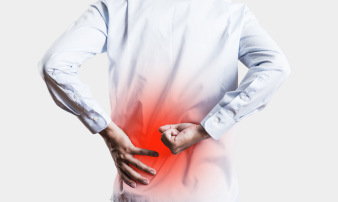
Back pain is one of the most common health issues affecting adults worldwide. It can range from a dull ache to sharp, debilitating discomfort...

ADHD Care is an important topic for families and individuals seeking better health and balance. Attention Deficit Hyperactivity Disorder...

ADHD Homeopathic Treatment for Adults is gaining attention as more people look for natural solutions. ADHD, or Attention Deficit Hyperactivity Disorder...

Natural treatments for attention deficit hyperactivity disorder are gaining attention as more people search for holistic and safer ways to manage this condition...

ADHD Homeopathic Treatment for Children is an area that many parents are beginning to explore as they look for natural ways to support...
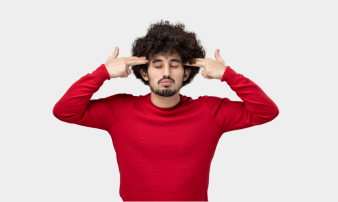
ADHD Understanding the Challenges is a condition that affects both children and adults, making it difficult for them to manage focus, attention, and behavior...

Attention Deficit Hyperactivity Disorder / ADHD is a common neurodevelopmental condition that affects both children and adults. It is characterized...

ADHD, also known as Attention Deficit Hyperactivity Disorder, is a condition that affects both children and adults. It is marked by difficulty focusing...
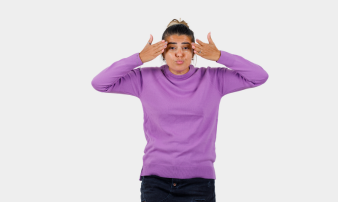
Homeopathic Treatment for ADHD is an emerging approach for parents and individuals seeking natural ways to manage the condition. ...

Homeopathy Is It Effective for ADHD? is a question many parents and adults ask when searching for natural ways to manage attention deficit...

Homeopathic treatment of attention deficit hyperactivity disorder is an area that has gained attention among individuals seeking natural and holistic...
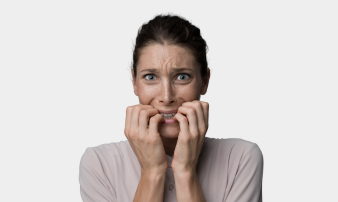
Anxiety (Homeopathy) is a growing concern in today’s fast-paced world, where behavioral and emotional issues are becoming more common...

Behavioral and emotional issues are becoming more common in today’s fast-paced world. These issues can affect thoughts, feelings, and overall mental well being....

Depressive Disorders Treated with Homeopathic Medicine is a subject of growing interest for those who seek natural and holistic ways to restore balance...

Homeopathic Remedies in Psychiatric Disorders are gaining attention as more people explore natural ways to address mental health. ...

Homeopathy for anxiety Treatments is gaining attention as more people seek natural solutions for managing behavioral and emotional challenges...
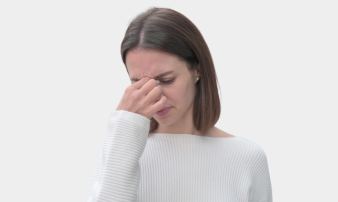
Homeopathy for Anxiety, Fear, and Panic Attacks is becoming a subject of interest for many people who are looking for natural ways to deal...

Behavioral and emotional issues affect many people in different ways, often disrupting daily life, relationships, and overall well-being....

Homeopathy in the treatment of depression is an approach that looks beyond surface-level symptoms and aims to address the underlying causes...

Behavioral and emotional issues affect millions of people across the world. These challenges can range from stress, anxiety, mood swings...
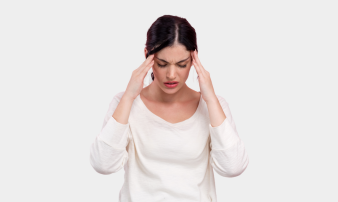
Behavioral and emotional issues often arise from prolonged stress, unresolved emotions, or lifestyle imbalances. These conditions may affect how a person thinks...

Immunity is the body’s natural defense system that protects us from infections, viruses, and other harmful agents. When immunity is strong the body can fight off...

Boosting Immunity Through Homeopathy is an important subject for anyone interested in natural health alternatives. Immunity is the body’s defense system...

Homeopathic Medicine for Immunity Boost is becoming a widely discussed topic among people who seek natural alternatives to stay healthy...

Homeopathic Medicine to Boost Child's Immunity is becoming a topic of interest for many parents who wish to support their children’s health...

Homeopathy and COVID-19 Boost your Immunity is an important topic today as people are searching for safe and natural ways to protect their health...

Homeopathy for seasonal cold and immunity is an important area of natural health that many people are exploring today. With changing weather conditions...

Homeopathy Medicine for Immunity Booster is gaining attention as more people look for safe and natural ways to stay healthy Immunity is the body's defense system...

Immunity is the body’s natural defense system that protects us from infections, seasonal illnesses, and chronic conditions. When immunity is weak...

How Homeopathy Boosts Immunity And Why It Should Be The First Line Of Treatment starts with understanding immunity itself. Immunity is the body's natural defense system...

Immunology and Homeopathy is an important area of focus for those who seek natural ways to strengthen their body’s defense system...

Obesity is a growing health concern worldwide, often linked to lifestyle habits, hormonal imbalance, or genetic factors. Carrying excess weight can lead to complications...

Obesity is one of the most common health challenges worldwide and is often linked to an inactive lifestyle, poor diet, and hormonal imbalances...

Obesity is one of the most pressing health concerns in today’s world, affecting millions of people across all age groups. It occurs when excess fat accumulates...

Obesity is a growing health concern worldwide and can lead to serious complications if left untreated. Excessive weight not only affects physical appearance...

Obesity is a growing health concern that affects both physical and mental well-being. Carrying excess weight not only impacts confidence...

Obesity in children has become one of the most pressing health concerns today. When a child gains excessive weight beyond the normal range for their range...

Individualized Homeopathic Therapy in a Case of Obesity is gaining attention among people seeking natural and holistic approaches. Obesity is a condition marked...

Lifestyle Diseases and Homeopathy Remedies is an important subject today as obesity has become one of the most common health challenges...

Obesity has become one of the most common lifestyle conditions in today’s world. It occurs when excess fat accumulates in the body leading to health risks...

Obesity Weight Loss Treatment Homeopathic Medicine focuses on addressing excess fat in the body that can lead to heart disease, diabetes...

Vitiligo is a skin condition that causes loss of pigmentation, resulting in white patches appearing on various parts of the body. While it is not life-threatening...
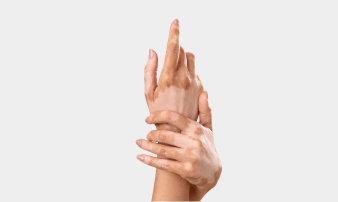
Vitiligo is a chronic skin condition characterized by the loss of pigment in certain areas, leading to white patches on the skin. Understanding vitiligo ...

Vitiligo is a skin condition where patches of skin lose their natural color due to the destruction of pigment-producing cells called melanocytes. ...
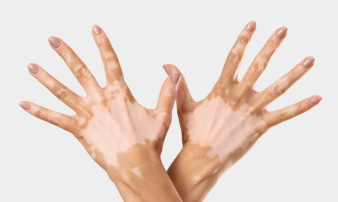
Vitiligo is a long-term skin condition characterized by the loss of pigmentation, resulting in white patches on different parts of the body. ...

Vitiligo is a skin condition that causes loss of pigmentation, resulting in white patches appearing on various parts of the body. While it is not life-threatening...

Vitiligo is a skin condition that causes patches of skin to lose their natural color due to the destruction of pigment-producing cells. Many people ...

Vitiligo is a skin condition that causes white patches due to the loss of pigment cells known as melanocytes. It is not contagious, but it can affect a person’s...

Vitiligo is a skin condition where patches of skin lose their natural color due to the absence of melanin. It can appear on any part of the body ...
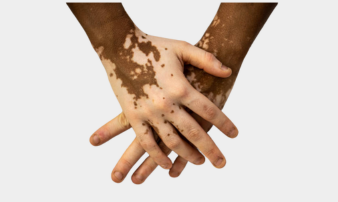
Vitiligo is a skin condition that causes patches of skin to lose their natural color due to a lack of melanin. It can affect people of all ages ...
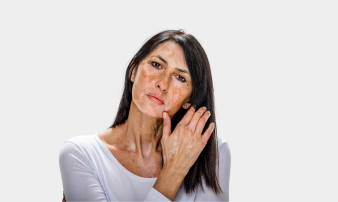
Vitiligo is a condition where patches of skin lose their natural color due to the destruction of pigment-producing cells called melanocytes. ...
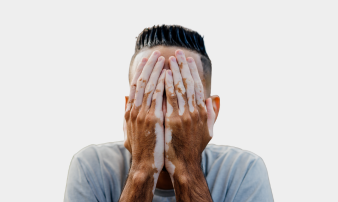
Vitiligo is a skin condition where patches of skin lose their natural color due to a lack of melanin. This can happen anywhere on the body and may spread ...

Vitiligo is a skin condition where certain areas lose their natural pigment, leading to white patches on the skin. Many people often wonder, will vitiligo...

Vitiligo is a skin condition that causes white patches to appear due to the loss of skin pigment. These patches can develop on any part of the body...

Vitiligo is a chronic skin condition where the skin loses its natural pigment, resulting in white patches on different parts of the body. While it is not life-threatening...
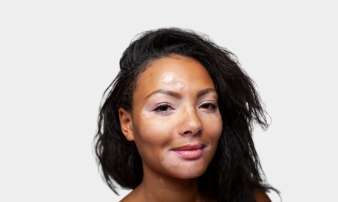
Vitiligo is a skin condition where the cells that produce pigment stop working, leading to white patches on the skin. It can appear on different parts...
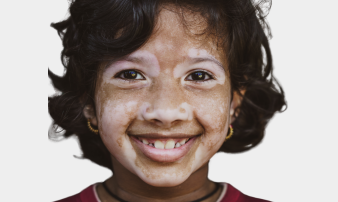
Vitiligo is a skin condition that causes white patches to appear on different areas of the body. It happens when the skin loses its natural pigment due to the destruction ...

Vitiligo is a skin condition where the cells that produce pigment are gradually destroyed, leading to white or lighter-colored patches on the skin. ...

Vitiligo is a skin condition that causes patches of the skin to lose their natural color due to the destruction of pigment-producing cells. It can appear on any part of the body...
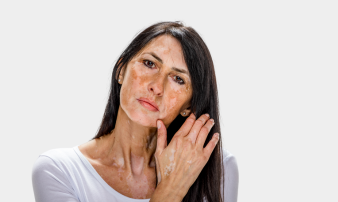
Vitiligo is a condition that causes loss of skin color in patches. It happens when the pigment-producing cells in the skin stop working or die....
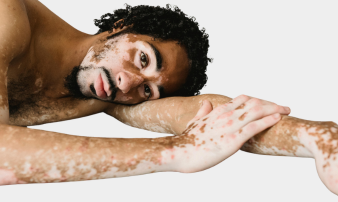
Vitiligo is a skin condition where certain areas lose their natural color due to a lack of melanin production. This results in white patches...